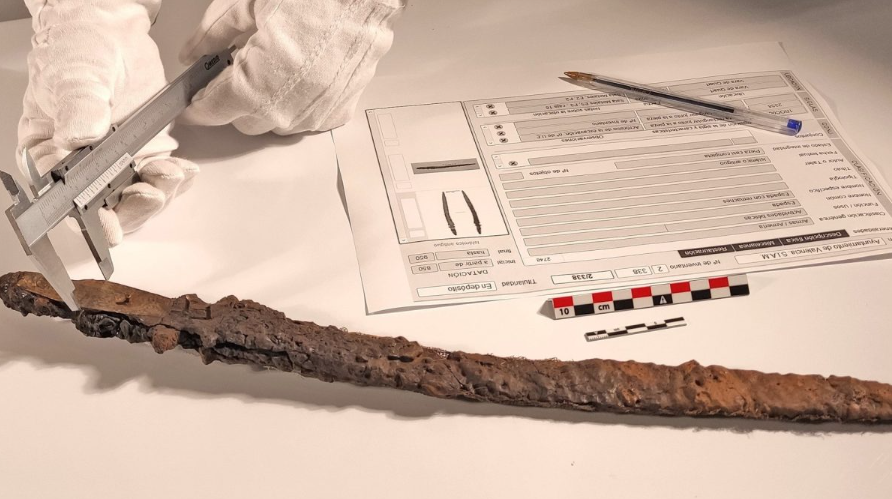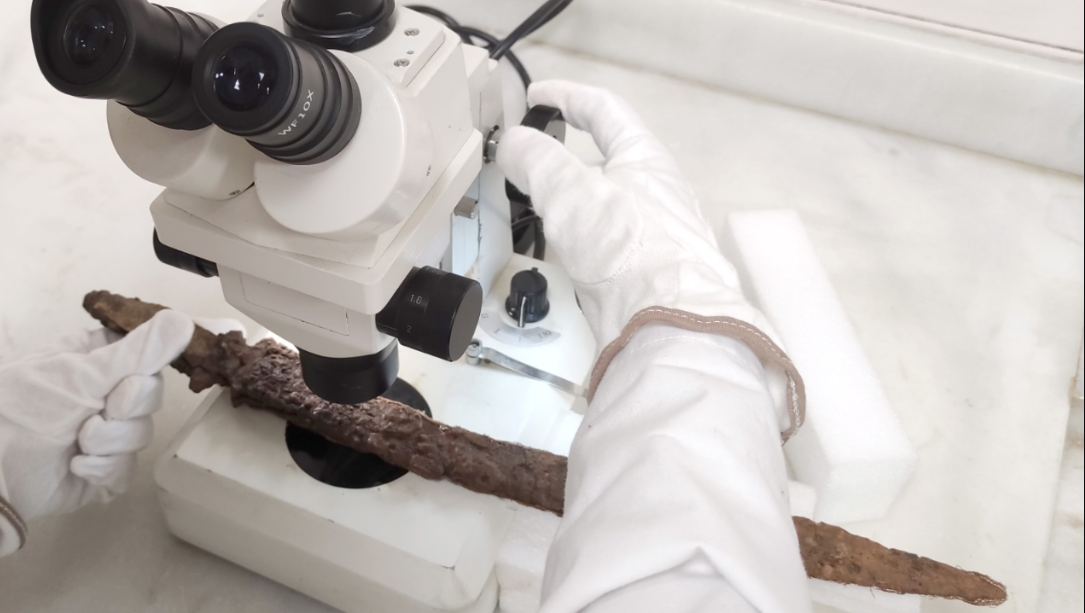Researchers have finally unraveled the mysteries of the historical sword discovered in Spain 30 years ago.
Others are reading now
Researchers have finally unraveled the mysteries surrounding a historical sword unearthed in Spain 30 years ago.
Affectionately named ‘Excalibur’ due to its striking resemblance to the legendary sword of King Arthur, this artifact was discovered standing upright in the ground in 1994 at an archaeological site in the old town of Valencia, a city on Spain’s eastern coast.

Also read
A Surprising Heritage
For three decades, the sword’s origins and age puzzled experts.
However, recent investigations, aligned with the Valencia City Council’s 75th anniversary, prompted a thorough review of the artifacts in its collection, bringing new insights about the Excalibur sword.
Recent dating techniques employed by the Archaeology Service (SIAM) of the Valencia City Council have determined that the sword dates back to the 10th century, establishing its age at over a millennium and confirming its origins from the Islamic era—a time when swords of this type were rare in Spain, especially in Valencia where soil conditions challenge preservation efforts.
The 18-inch blade, adorned with a hilt featuring bronze plates and handling notches, initially confused researchers due to its curved metal tip, leading to speculation about Visigothic origins.

Islamic Era Artifact
José Miguel Osuna, who led the research earlier this year, clarified that the design aligns with weaponry from the Islamic period, potentially used by a mounted warrior during the Andalusian caliphal era.
The sword’s characteristics suggest influences from Visigothic models, yet it clearly originates from the Islamic period of Balansiya.
A similar artifact has only been found once before, during excavations at the caliphal city of Medina Azahara, commissioned by Abderramán III in Córdoba.
The Islamic period in Spain spanned from A.D. 711 to A.D. 1492.
“This exceptional find, which we have named Excalibur de Roc Chabàs due to its resemblance to the legendary sword of King Arthur, is part of a broader study encompassing metallic objects from Roman times to the late medieval period,” said José Luis Moreno, Valencia’s councilor for cultural action, heritage, and cultural resources.
Moreno highlighted that the sword is just one of many artifacts—from the Roman era to the late medieval period—being studied as part of the city’s archaeological collection in honor of the department’s 75th anniversary.


